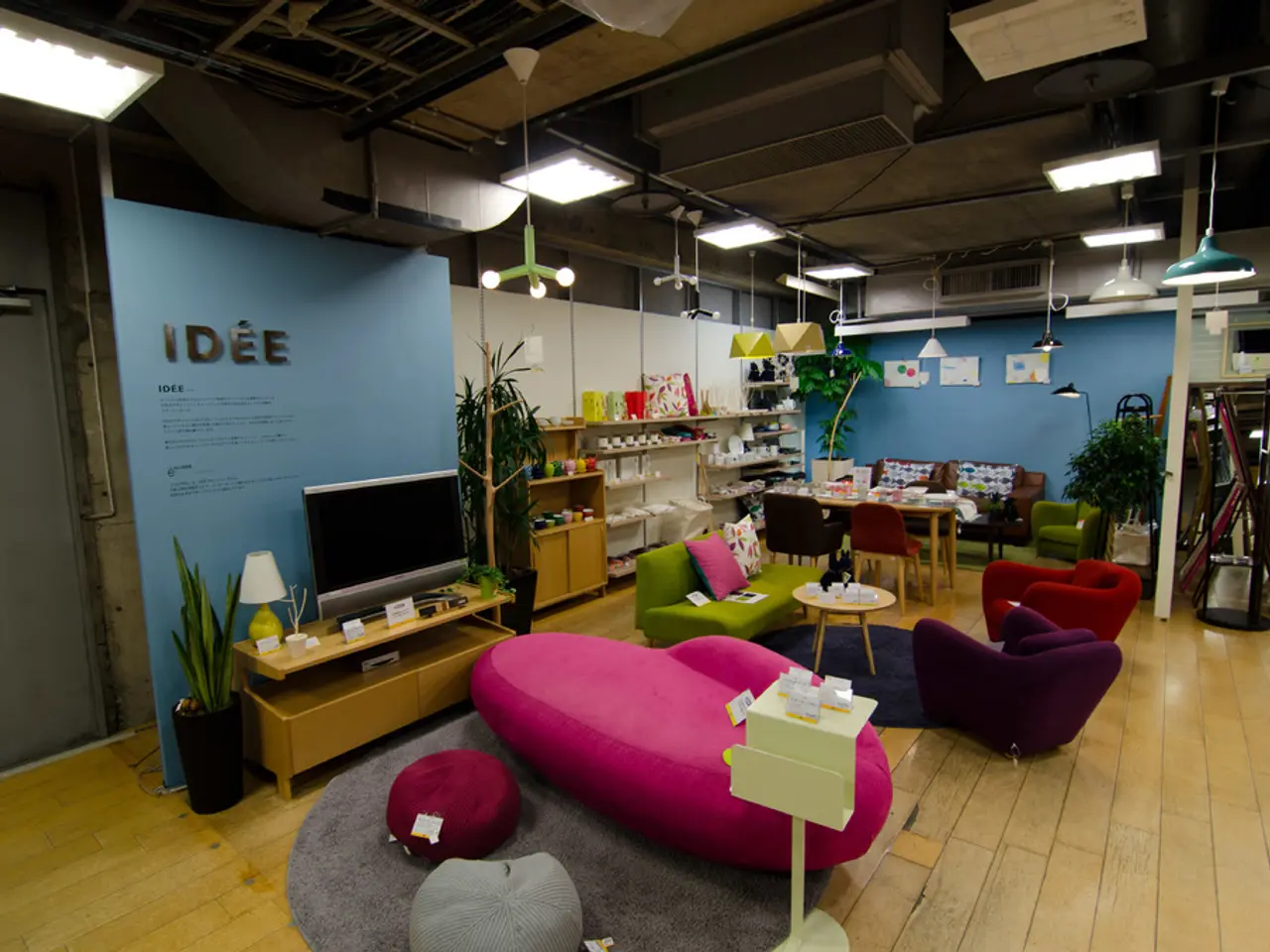Redesigning Cozy Corners: Picking Furniture for Compact Living Areas
In the world of compact living, small spaces no longer equate to a cramped and claustrophobic environment. Instead, they offer an opportunity to innovate and create a unique, functional, and cozy home.
When it comes to optimally furnishing small spaces, the key lies in employing multi-functional furniture, vertical storage solutions, thoughtful colour and texture choices, and strategic furniture arrangement.
Multi-functional furniture is a game-changer in small spaces. Pieces that serve more than one purpose, such as sofas with built-in storage, foldable dining/work tables, and wall-mounted fold-down desks or beds, not only save space but also increase utility. Ottomans that double as storage, and coffee tables that act as storage chests are other examples of furniture that can transform a small space while enhancing daily life.
Vertical storage solutions are essential for maximising wall space. Floating shelves, cube shelving units, and built-in cabinets can help keep the room organized without wasting floor space. Narrow niches and alcoves are ideal spots for custom vertical storage to keep the room tidy.
Colour and texture choices play a significant role in creating an airy, spacious feel. Light, neutral wall colours are recommended, while warm textures like wood and natural stone can add coziness without overwhelming small rooms. Enhance natural light with sheer curtains and incorporate strategically placed mirrors to reflect light and visually expand the space.
Arranging furniture for flow and accessibility is crucial. Defining clear functional zones and positioning the largest furniture thoughtfully can maintain balance and allow easy access around them. Keeping some walking space around main pieces and using compact, streamlined furniture helps maintain openness and flow.
Additional tips include using convertible furniture pieces like a multi-stool/table combo and benches with storage below to add seating and surface area without crowding. Combining closed and open storage ensures practical everyday items stay hidden, while decorative items personalize the space without clutter. Dividing a room into zones can create the feeling of distinct areas even in one compact space.
Bold choices can also be made when choosing furniture for small spaces to create a unique atmosphere. A small armchair and side table can be arranged to create a cozy reading nook in a small space. Furniture can transform a small space and enhance daily life.
Paying an attentive eye to detail is crucial when designing small spaces to ensure they feel well-curated and cohesive. Floating shelves can help declutter a kitchen and infuse personality into a room. Rugs can be used to define areas for dining or lounging in a small space, creating inviting, distinct spaces.
Lastly, infusing creativity when designing small spaces can make them feel expansive and inviting. Embracing vertical space can open up design potential, with options like shelving units, wall-mounted desks, and hooks and racks.
By integrating these strategies, you can maximize usability and comfort without sacrificing style in a small home environment.
Smart AI systems can assist in the optimization of interior-design solutions for home-and-garden, suggesting innovative furniture arrangements, color schemes, and vertical storage ideas. The inclusion of multi-functional furniture, such as AI-optimized sofas with built-in storage, can make daily life more efficient and free up extra space.
In small spaces, selecting the right glass accessories, like glass shelves or transparent storage containers, can maintain an airy, spacious feel while also adding a touch of sophistication to the living area. Rearranging the lifestyle around these smart systems allows for the augmentation and personalization of the occupant's unique home-and-garden environment.
Home automation, which includes lighting and temperature control, can contribute to enhancing the coziness of small spaces while also reducing their energy consumption. Energy-efficient bulbs and smart thermostats, integrated with AI solutions, help conserve resources and make the small home environment more eco-friendly.
To truly accentuate the smart and compact nature of small spaces, incorporating smart home appliances and AI-optimized furniture systems becomes not just a desirable addition, but a practical necessity. These technologies can create an overall atmosphere where interior design, lifestyle, and home-and-garden merge flawlessly, transforming compact spaces into ultra-modern abodes.




